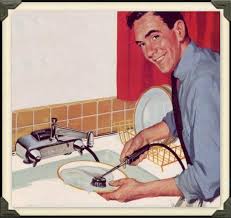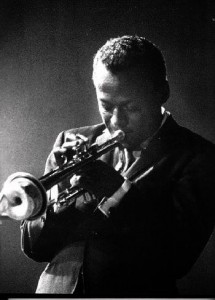Get Out of Your Head???
I’ve heard different people use the phrase “Get out of your head”, from personal trainers to drama coaches to fellow musicians to college friends who would rather see you dominate on the beer pong team than pass your biochemistry finals. Usually this irritating cliche evokes fleeting thoughts which are not consistent with Gandhian non-violence or my wellness coaching reputation.
In any case, the basic ideas (two) behind the dictum have merit. Nike (“just do it”) and other popularizers don’t necessarily legitimize it, but they’re onto something which is fundamentally attractive and maybe elusive for us. Here are the two ideas:
- Stop thinking and procrastinating and get on with it. Stop dipping your toe in the water and just jump in; the water’s fine.
- Less discursive thinking and more feeling. Let go of the mental replaying and the forecasting and pay attention to what’s right in front of you, without over-thinking it.
Before what it is, what it ain’t:
- Getting out of your own head is NOT thought suppression. That just doesn’t work. Remember the old “think-about-anything-except-pink-elephants” brain teaser? (sorry, it will pass…) The paradox here: accept and observe the thought; it will exit. Resist it or pretend it’s not there: it won’t go away. “Accept and observe” is another of way of saying mindfulness or meta-cognition.
- It’s not a mad rush to hedonism: sex, drugs and rock n’ roll. Sure, any wild night or binge will definitely get you out of your own head. But does it last? Is it sustainable? Is it worth sleeping by the toilet all night with a damaged guitar around your neck and Pabst Blue Ribbon perfume permeating your soggy clothing?? No, no, and usually not.
The value prop for wellness
I like the idea because it’s practical/useful for wellness change. First, “being in your head” and over-thinking bolsters procrastination, which can block a new wellness effort/habit like exercising or preparing healthy food. When it’s time for your run and you start and keep thinking about other things (what your not doing and being winded) you’ll probably skip the run and wonder later why you didn’t just do it.
Second, “getting out of your head” allows you to derive more pleasure from your wellness activities. You enjoy the activity itself more and — in hindsight — can feel good about the wellness activity/accomplishment/habit. This provides motivational fuel for change. Example: While you’re making a healthy dinner with your spouse you’re thinking about caloric content and the extra time it takes. So you miss the appetizing smells, tastes, sounds and fine company. I’m assuming you actually benefit from being a hearing person with your particular spouse.
Finally, “getting out of your head” and “into your body” can tell you how your body is adapting to wellness changes, and this leads to learning and growth. Experimentation (with adaptation and learning) is the big ignored or underestimated middle step in between the wellness plan and the wellness result. Noticing how your body feels without over-thinking — when you’re really hungry, when certain foods agree or disagree, where you’re sore, when you’re high or low energy — allows you to learn and can adjust your wellness plan and initiatives.
How to “Get out of your own head”
- Realize that anticipating an experience can be more off-putting than the experience itself. Note Thich Nhat Hanh’s paraphrased comment that “the only time I don’t like washing the dishes is when I’m not washing the dishes.” Once you get your hands in the warm water and are present, it’s not so bad. Pleasant, even.
 But thinking about it (or about not doing it or about other things you could do instead) is more unpleasant than actually doing it. Exercise is the same way.
But thinking about it (or about not doing it or about other things you could do instead) is more unpleasant than actually doing it. Exercise is the same way. - Studies show that the longer you over-think and procrastinate, the more likely you are to cave and avoid the wellness activity (typically exercise). Procrastination is actually a battle between the limbic system (child, wants comfort-play) and the pre-frontal cortex (parent, taskmaster) and the amygdala (manages fear response). The longer you stoke your fear with negative over-thinking, the more the amygdala shuts down your pre-frontal cortex. That means the child will win (no exercise, back to my reality show). To give your parent a fighting chance:
- Be super clear about your wellness vision/goals and how the planned activities directly support those goals and vision.
- Visualize your activity ahead of time and script the moves*. Visualization has been shown to reduce cognitive resistance.
- Shrink the change* to get to your activity. The next step to your 25-mile bike ride is not breathing hard on the cycle. Thinking that feeds your amygdala and keeps you in your head, procrastinating, or makes you quit. The next step is putting on your cycling shoes, so do that. Keep doing the next small thing and you’ll git ‘er done before you can say “Tour de France” or “freedom fries”.
- Dump the perfection and don’t aim too high. Perfectionists are more vulnerable to over-thinking and procrastination. Realize that perfection is the enemy of getting out of your head — and more importantly — progress. Don’t have time for your 25-mile ride? Make it 10 miles. Tired? Make it an easy ride.
- The mental image of just jumping in without dipping your toe can be empowering and helpful, even if the activity is more logistically complex. Just jumping in is not thought suppression or avoidance. It’s recognition that parts of your own brain can and will work against you if you indulge them.
- For wellness activities which are more logistically complex, tweak your environment* to reduce or eliminate the logistical hurdles so your amygdala generate fears to fuel procrastination. Take body weight workouts at home, as effective as going to your gym. Your home does not require money, sexy workout outfits, a car ride, and public sweating and grunting.
- To get to more feeling and less thinking (into your body and out of your head):
- Spend more time in nature. Go for a walk. Climb a mountain. Visit a garden. Shut off your cell phone. And less talking and more looking, breathing, noticing your own movement.
- Get a massage. Really. Your body awareness will take a quantum leap during and after. It’s wellness disguised as pure pleasure.
- Listen to music and move with it, preferably with a partner. Notice I didn’t say “dance”, because that evokes styles and then over-thinking, and that is absolutely not the point. Your version of Michael Jackson’s moonwalk is not helping you or anyone with eyes. Let the music move you without thinking. If it’s not pretty, so what, who cares.
- Yoga and/or meditation. From these you gain body-sensitivity and mindfulness, the cures to a whole lotta ills. In addition to body awareness you get to know those gnarly brain parts pushing you without your permission. By the way, I realize that I just recommended a wellness activity to help reduce your resistance to doing wellness activities. But it is a chicken and egg problem; doing something and practicing helps you get to more and better stuff. Start somewhere.
Finally, “getting out of your head” doesn’t mean that your thinking brain is shut down. If you’re a Michael Jordan playing basketball or a Miles Davis playing a trumpet solo, your thinking brain is still all there. But it’s part of a bigger mental state firmly connected to the present activity/environment and not fearful or distracted by other self-limiting cognition. The amygdala is out-to-lunch here, and we like that. That’s where you get the least hesitation and the best human performance.
Like Michael and Miles who mastered their crafts, getting of your head takes practice. Then also like Michael and Miles, over time you can call on your skills with less/low/no effort. Now go get out of your head. Just stay away from the Pabst Blue Ribbon.
* Chip and Dan Heath eloquently put forward these ideas in their book “Switch”, which describes a great framework for making tough changes.


